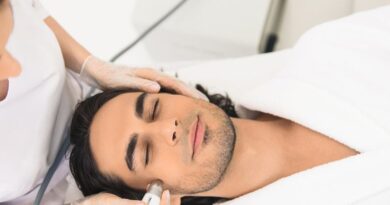Milia – What Are They?
Milia are tiny cysts that can appear anywhere on your body. Newborns commonly develop these lesions, and they usually disappear on their own within several weeks or months.
Reduce your chances of milia by using light moisturizers and eye creams that contain moisturizing agents, and refraining from picking or poking at them as this could lead to infection and scarring.
Causes
Milialar occurs when your skin doesn’t shed dead cells properly. They may be caused by trauma (e.g. sunburn or dermabrasion), medications like corticosteroid creams or genetic conditions like discoid lupus or lichen planus.
These tiny cysts resemble whiteheads or pimples but feel much softer, without an inflamed surface like acne. Milia aren’t contagious or harmful but some individuals may feel self-conscious if there are many of them visible on areas such as their face.
Reduce your chances of milia formation by using gentle skincare products and exfoliating regularly, using cleanser containing exfoliating ingredients such as salicylic or citric acid, light water-based facial peels tailored specifically for your skin type, or applying sunscreen with an SPF high enough.
Symptoms
Milia are hard, pearly white cysts found underneath the skin that resemble small comedones or acne. Milia are typically located on the nose, cheeks, trunk and limbs but can also occur in newborn mouths (neonatal milia).
Healthcare providers can diagnose milia via visual exam. If there are any doubts, however, they may suggest performing a skin biopsy for further exploration and to confirm the diagnosis (for instance basal cell carcinoma may look similar).
Milia are harmless skin conditions that do not itch or cause pain, yet can be difficult to remove. Patients should avoid scrubbing, pinching, exfoliating or using peels with too harsh an acidity as this could lead to their rupture and further infection. Furthermore, harsh exfoliators or peels could irritate skin even further making milia worse; instead seek advice from a dermatologist on products which promote healthy cell turnover such as retinoids or facial peels that could promote better cell turnover in order to remove them more effectively.
Diagnosis
Milia are often mistaken for baby acne; an experienced paediatrician will be able to distinguish the two conditions. Milia typically resolve themselves within weeks without any long-term issues or serious consequences.
Newborns and infants are particularly prone to developing milia, although it can affect people of all ages. While symptoms often resolve quickly in newborns and infants, older children and adults may take longer.
Squeezing or picking at a milia may cause it to become inflamed, bruised or infected – not contagious, but picking at them may result in long-term scarring. Ideally they should pass naturally over time but if that isn’t possible a dermatologist can surgically remove them using different removal techniques like cryotherapy (liquid nitrogen freezes the cyst) and de-roofing (where healthcare provider makes small incision into milia then scoops out contents). Topical retinoids may also prove effective against them.
Treatment
Milky-white or yellow cysts on the skin that are painless and usually go away without treatment within weeks to months can occur at any age, skin type or gender; neonates as well as older children and adults, especially where there has been damaged or scarred skin damage, often on nose, cheeks, lips and eyelids (though more rarely genitalia and trunk). They should not be confused with closed comedones (whiteheads), since these don’t live within pores and do not itch.
Milia that persist or are itchy should be evaluated by a dermatologist or other expert in skin conditions, since they can easily be misdiagnosed as cystic acne, scabies or other skin injuries. Secondary milia can be treated with retinoids or prescription medications; or frozen with liquid nitrogen for quick removal. Other less frequently employed remedies for persistent cases may include surgical excision for stubborn cases or manually extracting multiple eruptive milia that have not appeared on the face.



